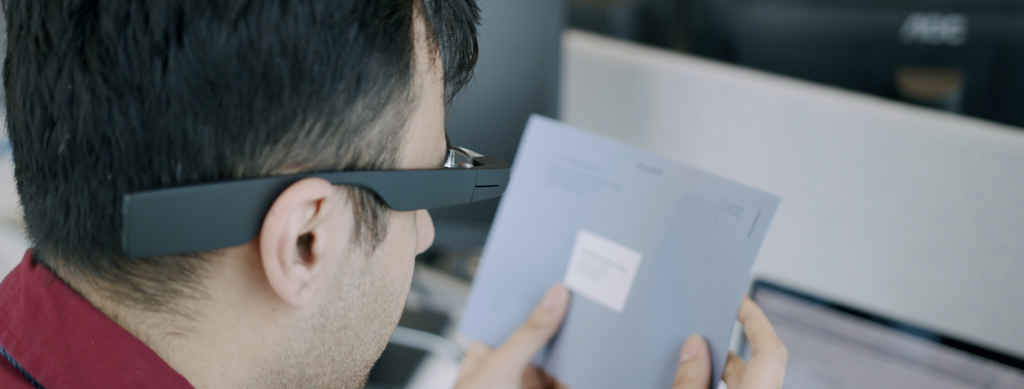The Future of Assistive Technology for the Blind: Empowering Independence
The Future of Assistive Technology for the Blind: Empowering Independence
Blog Article
Discover Advanced Assistive Instruments for People With Visual Problems
The landscape of assistive innovation for individuals with visual impairments is progressing swiftly, presenting an array of cutting-edge devices that boost freedom and interaction. From wise glasses that flawlessly combine aesthetic input with auditory advice to advanced navigating applications that redefine spatial awareness, these tools are reshaping opportunities.
Smart Glasses Innovations
Smart glasses represent a considerable improvement in assistive technology for people with aesthetic problems. Geared up with sensors and cameras, wise glasses can record real-time visual details, which is after that refined and shared to the user via audio comments or haptic feelings.
Furthermore, improvements in artificial intelligence have even more improved the abilities of smart glasses. Maker learning formulas can identify faces, checked out message, and identify things, making them important devices for daily jobs. Users can get auditory cues that give context concerning their atmosphere, promoting freedom and confidence.
Furthermore, the ergonomic style and light-weight nature of several clever glasses make them appropriate for extended use, ensuring convenience while enhancing capability. As these tools proceed to develop, they hold the prospective to change the way people with aesthetic problems experience their lives, linking the gap in between access and innovation. The recurring research study and development in this field pledge to increase the possibilities for smart glasses, making them an important part of contemporary assistive devices.
Navigation Apps and Equipment
Countless navigating apps and devices have arised as necessary sources for individuals with visual disabilities, significantly enhancing their capability to pass through unknown environments. These modern technologies utilize general practitioner performance, audio hints, and real-time information to provide individuals with exact navigating support.
One noticeable instance is the Aira application, which attaches users to qualified representatives who can supply visual summaries of surroundings and navigation assistance via a live video clip feed. This service enhances the individual's spatial recognition and self-confidence while navigating. Another significant tool is Seeing Eye GPS, which offers voice-guided navigation and sights, making it possible for customers to accessibility important details concerning their environments.

As modern technology remains to development, the growth of much more sophisticated navigating devices guarantees to additional encourage people with aesthetic problems, assisting in seamless wheelchair and integration right into diverse environments. Such innovations are instrumental in advertising a more comprehensive society.
Braille Modern Technology Developments
Recently, innovations in Braille modern technology have significantly changed exactly how people with visual disabilities access info and engage with the world around them. The advancement of mobile Braille display screens has actually reinvented analysis by allowing customers to connect wirelessly to computers, tablet computers, and mobile phones. These tools transform message right into Braille in real-time, enabling smooth interaction with digital content.
Furthermore, innovative Braille printers have emerged, boosting the production of tactile products. Modern embossers are much faster and extra effective, permitting the fast creation of Braille records and educational products. This effectiveness lowers the time and price connected with creating Braille resources, making them more accessible to colleges and companies.
In addition, the combination of Braille with other technologies, such as man-made knowledge and artificial intelligence, has actually opened up brand-new opportunities for individualized learning experiences. Voice recognition and synthesis technologies can match Braille, providing an inclusive method to info circulation.
As the demand for inclusive education and learning and workplace environments grows, these technological improvements play an essential function in empowering individuals with visual impairments, guaranteeing they have equivalent accessibility to details and opportunities in numerous aspects of life.
Wearable Tools for Independence
An expanding range of wearable tools is boosting freedom for people with aesthetic disabilities, offering cutting-edge remedies that improve discover here navigating and day-to-day living. Braille displays and notetakers. These devices use advanced technologies to supply real-time responses and support, advertising autonomy in various settings

Wearable technology likewise includes smartwatches that can be programmed with availability features, enabling customers to obtain notices, track their areas, and even call for support with the touch of a switch. Furthermore, some tools include expert system to examine the environment, offering sound descriptions of neighboring objects or individuals.
Voice-Activated Assistive Solutions
Leveraging voice-activated assistive remedies has actually transformed the landscape of support for individuals with aesthetic impairments, giving hands-free interaction and accessibility to a selection of tasks. These technologies make use of all-natural language handling and fabricated knowledge to allow individuals to perform everyday tasks with simple voice commands.

Furthermore, current advancements in voice acknowledgment precision have actually improved the customer experience substantially, fitting diverse accents and speech patterns. This inclusivity ensures that even more individuals can gain from these technologies, promoting a better feeling of autonomy.
Verdict
To conclude, the advancement of advanced assistive tools considerably boosts the independence and lifestyle for individuals with aesthetic disabilities. Innovations such as smart glasses, navigating apps, Braille innovation, wearable tools, and voice-activated solutions collectively cultivate a more comprehensive atmosphere. These innovations encourage individuals to browse their environments with confidence and engage even more fully with the world, eventually advertising higher availability and equal opportunities for people facing visual obstacles.
The landscape of assistive modern technology for people with aesthetic disabilities is evolving rapidly, presenting an array of ingenious tools that enhance freedom and interaction.Smart glasses represent a significant improvement in assistive modern technology for individuals with aesthetic impairments. As these gadgets continue to develop, they hold the potential to reinvent the way individuals with visual disabilities experience their day-to-day lives, linking the void in between availability and innovation.In recent years, innovations in Braille modern technology have actually considerably transformed how people with visual impairments accessibility details and involve with the world around them. These innovations equip customers to browse their environments with self-confidence and engage more completely with the globe, eventually advertising greater accessibility and equivalent possibilities for individuals dealing with visual obstacles.
Report this page